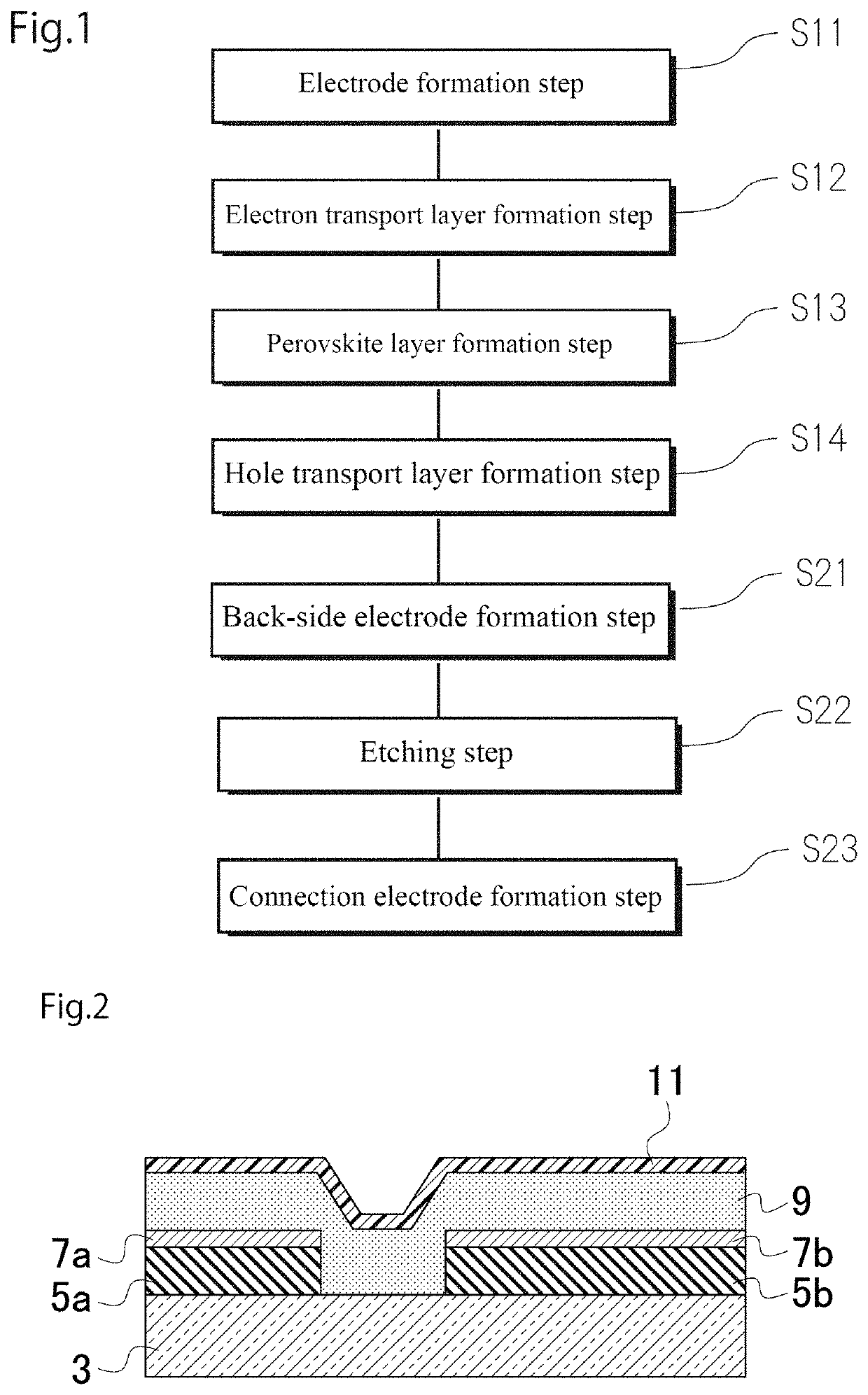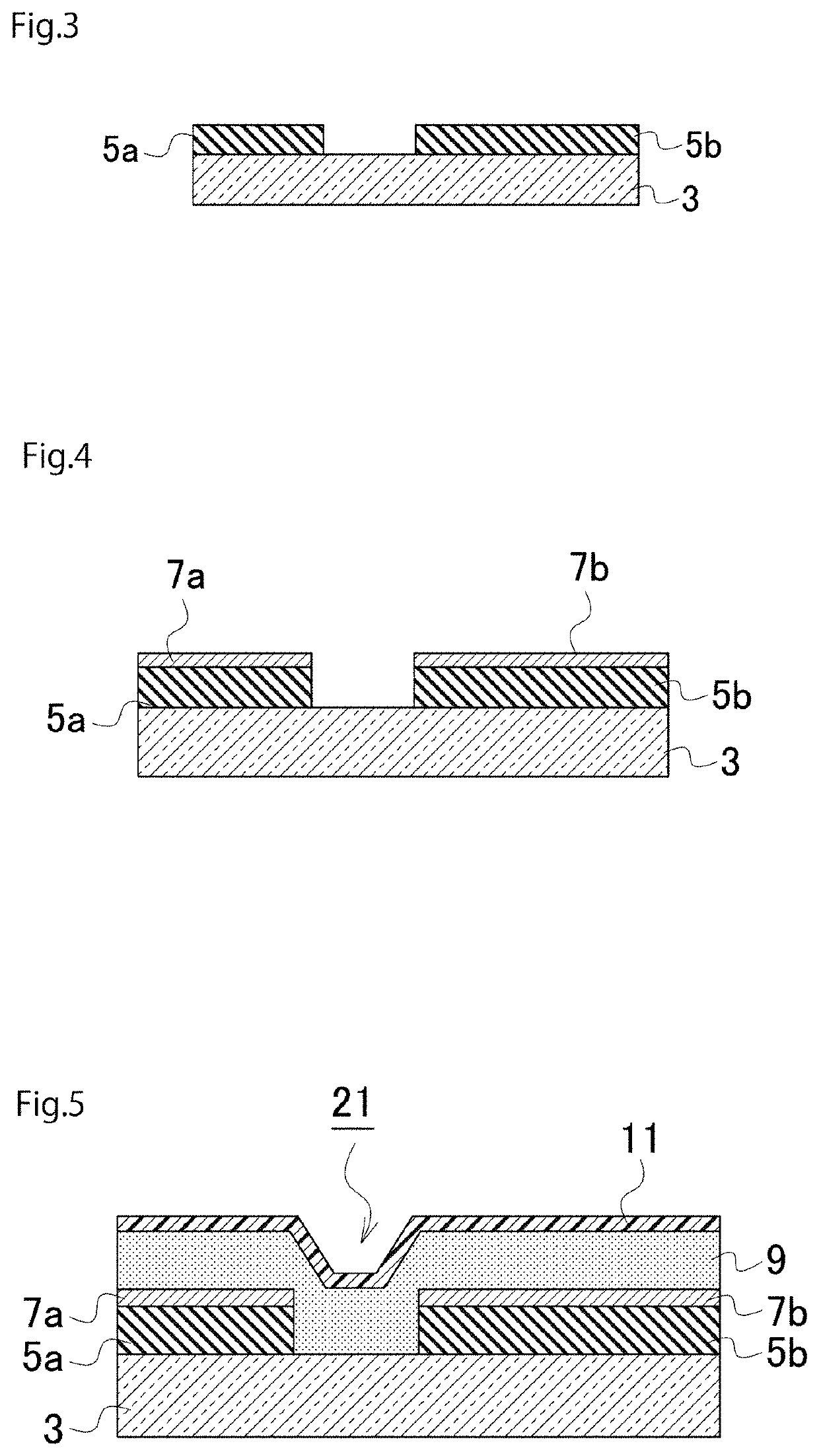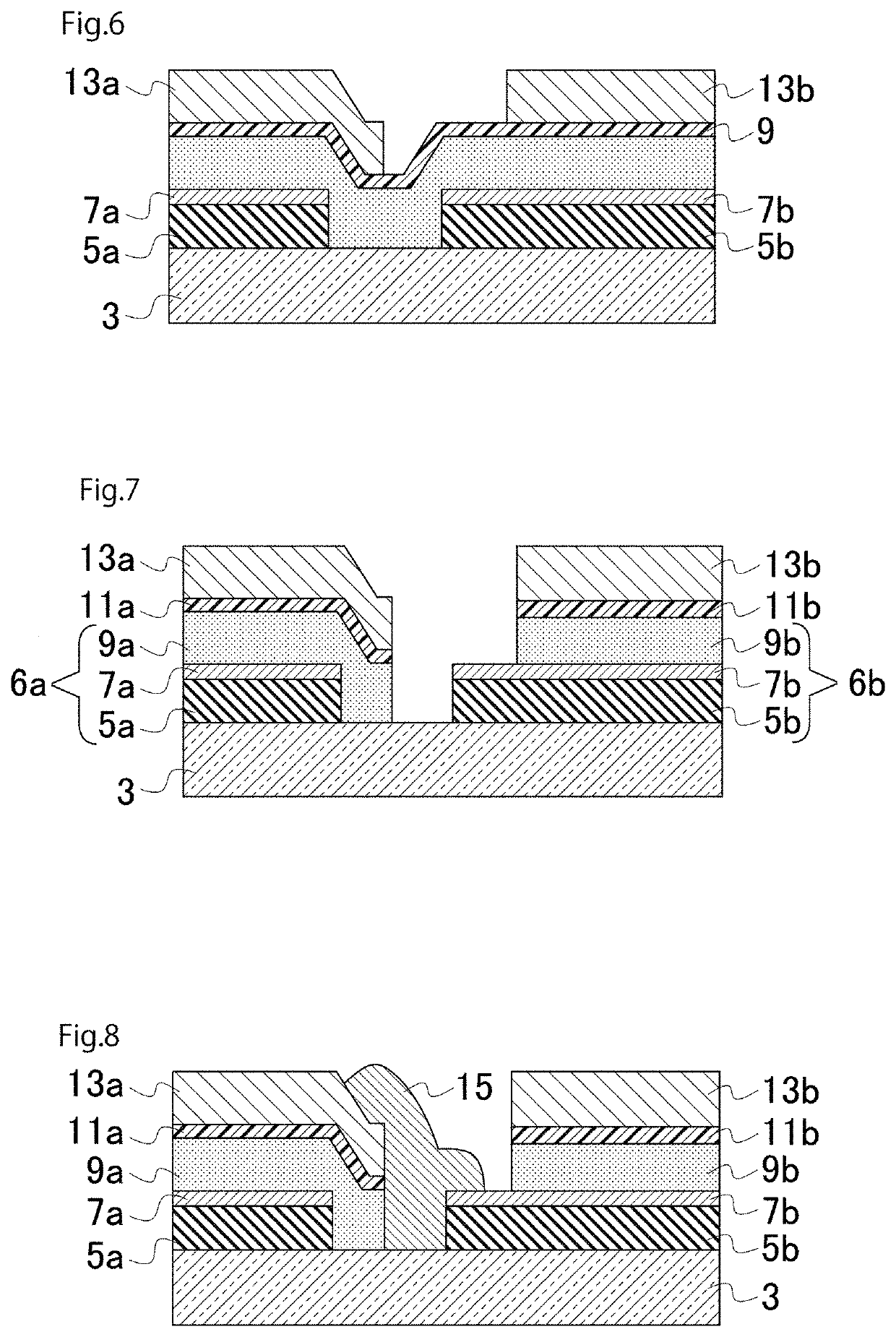Element manufacturing method
- Summary
- Abstract
- Description
- Claims
- Application Information
AI Technical Summary
Benefits of technology
Problems solved by technology
Method used
Image
Examples
embodiment 1
[0096]FIG. 9 is a schematic view for explaining a solar cell according to
[0097]On a glass substrate 3, there is an ITO (indium tin oxide) of the electrode 5 that has been patterned into a prescribed shape in advance. Thereon, the electron transport layer 7, the perovskite layer 9, and the hole transport layer 11 are sequentially applied. The electron transport layer 7 can be formed by spin coating and then drying a colloidal SnO2 aqueous solution. The perovskite layer 9 can be obtained with high quality by applying a prescribed material by spin coating and then further coating a poor solvent. The hole transport layer 11 can be obtained by spin coating and then drying a solution containing Spiro-MeOTAD.
[0098]The above layers are formed based on spin coating, and thus they are laminated over the entire surface of the substrate.
[0099]In the prior art, it was common to perform a process of patterning the layers that were laminated before the formation of the back-side electrode. However...
PUM
 Login to View More
Login to View More Abstract
Description
Claims
Application Information
 Login to View More
Login to View More - R&D
- Intellectual Property
- Life Sciences
- Materials
- Tech Scout
- Unparalleled Data Quality
- Higher Quality Content
- 60% Fewer Hallucinations
Browse by: Latest US Patents, China's latest patents, Technical Efficacy Thesaurus, Application Domain, Technology Topic, Popular Technical Reports.
© 2025 PatSnap. All rights reserved.Legal|Privacy policy|Modern Slavery Act Transparency Statement|Sitemap|About US| Contact US: help@patsnap.com



